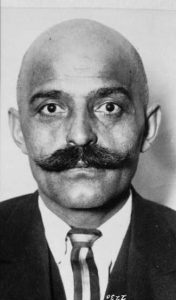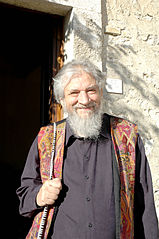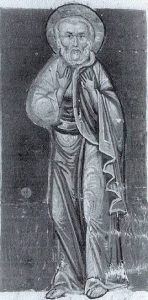 The enneagram is enjoying a new popularity these days, mostly driven by a new generation of Catholics who are seeking a connection with the transcendent in ways other than those proposed by mainstream religions. The fact that the Enneagram has occultic roots has kept many people away from the use of this device, but others are bypassing this rather significant roadblock by inventing a whole new Christian history of its roots. But how well does this new history stand up to serious scrutiny?
The enneagram is enjoying a new popularity these days, mostly driven by a new generation of Catholics who are seeking a connection with the transcendent in ways other than those proposed by mainstream religions. The fact that the Enneagram has occultic roots has kept many people away from the use of this device, but others are bypassing this rather significant roadblock by inventing a whole new Christian history of its roots. But how well does this new history stand up to serious scrutiny?
For those who are unfamiliar with the Enneagram, it is a personality typing system composed of a circle surrounding a nine pointed star upon which nine human personality types are symbolically represented at equally distant points on the circumference. These numbers are then connected by arrows in significant patterns which supposedly point the way to health (integration) or neurosis (disintegration).
“Each type is a personality compulsion, a wrong or even ‘demonic’ way of behaving,” explains Father Mitch Pacwa, a world-class expert on the Enneagram. “Once a person identifies his or her type (usually classified by a number on the enneagram), then he or she can learn how to improve or avoid getting worse spiritually.”
The enneagram came from the Sufi religion and was introduced to the west by an Armenian occultist named Georges Ivanovitch Gurdjieff, who lived in Russia from 1877 to 1947. He attended the seminary as a boy but left at the age of 13 to pursue the occult, in which he was deeply involved for the rest of his life.
During his travels through Egypt, India and Tibet, he came across a group of Sufis (Muslim mystics) who lived in Central Asia, from whom he learned the enneagram. They had been using it for fortune telling through numerology and as a symbol of the nine stages of enlightenment rather than the nine personality types ascribed to it in the west. Gurdjieff believed the enneagram was a universal symbol containing secret powers, and it was he who brought the symbol to the west.
Oscar Ichazo, a Chilean occultist, later adapted the enneagram to its present use after learning it from one of Gurdjieff’s disciples. Ichazo is responsible for developing the system of nine personality types that it now contains. Ichazo’s history is even more disturbing than Gurdjieff’s. “At the age of six he began having out-of-body experiences, which led to his disillusionment with the church,” Father Pacwa writes. “He could not accept Catholic teaching on heaven or hell because he had been there and knew more about it than Christ and the Church.”
Ichazo was involved in Oriental martial arts, Zen, Andes Indian thought, shamanism, yoga, hypnotism and psychology. He claims to have received instructions from a higher entity called “Metatron, the prince of the archangels.” He and his followers claim to contact lower spirits through meditation and mantras, and to be guided by an internal master, known as the Green Qu’Tub, who makes himself known when they reach a sufficiently high stage of development.
Another principal player in the advent of the enneagram in the west was Chilean, Claudio Naranjo, who brought it to the popular New Age community known as the Esalen Institute in Big Sur, California. From Esalen, Naranjo established a nationwide network of small Enneagram groups. Among his early students was Father Robert Ochs, S.J. by whom Father Pacwa was taught at Chicago’s Loyola University. From there, it quickly spread to seminaries and the general public.
As disturbing as this history is, the new “Christianized” version completely eliminates these details and instead insists upon reconstructing it’s past in order to give it a Christian origin.
The dissident priest, Father Richard Rohr, played a large role in this when he wrote The Enneagram: A Christian Perspective with Andreas Ebert. Originally published in 2000, it was reprinted in 2016 with a new preface written by Ebert who explains that since the first edition they became convinced that the Enneagram is not derived from Sufi sources but can be traced back to two Christian desert monks Evagrius Ponticus (d. 399) and the Franciscan Blessed Ramón Llull (1236–1315).
Citing these Desert Fathers, and perhaps even the pre-Christian Pythagorus, he claims that it was passed on orally to the Sufis. “Thus, although it seems to be genuinely Christian, it draws from pre-Christian sources and has had an influence on non-Christian mystical traditions.” Even though he makes this seemingly unequivocal statement, he goes on to admit that “I believe that the Enneagram can help us find a deeper and more authentic relationship with God – even though it was not discovered by Christians.”
This statement, albeit contradictory, actually makes perfect sense when we consider the weak evidence for its Christian roots, namely the two desert monks.
For example, Blessed Raymond Lull did indeed create a circular drawing that looks somewhat like an Enneagram, however, it was not a personality profiling system but was designed to be an evangelization tool to reveal the nine qualities of God to Jews and Muslims.
The 4th Century desert monk, Evagrius Ponticus, is said to have used the Pythagorean number theory to describe a symbol that looked like an Enneagram. However, this association falls apart when we discover that the zero, the decimal point, and the repeating decimal values which are key to the Enneagram system, were unknown until the 14th Century. This means that Ponticus could not have been the inventor of the Enneagram.
In spite of this rather muddled rewrite of history, popular Enneagram “coaches” are sprouting up all over the Internet, all part of a new resurgence of interest in the method that has become a trendy new tool to find one’s “inner path” to peace.
For example, Beth and Jeff McCloud, who operate an online organization known as “Your Enneagram Coach,” offer courses ($49) such as “Discovering You” in which they claim the enneagram is “your internal GPS” to help you avoid falling into common pitfalls and become “your healthiest self.” They promise to help students “understand your core fears and desires and why Christ is the only answer.”
InterVarsity Christian Fellowship offers the Enneagram and claims that “When used in Christian contexts, it shows us aspects of God’s character and connects us more closely to the truth that we are made in his image and meant to reflect him in the world.”
It seems hard to believe that so many savvy young Christian souls are wandering down this path in spite of the fact that this personality tool not only originates in a non-Christian religion but is also considered by the scientific community to be junk science.
“No tests, no standards, no board of examination exists, so most enneagram ‘experts’ have that title through self-declaration and workshop advertising,” writes Father Pacwa. “People do not go to doctors and psychologists unless that practitioner is tested and licensed. Should not some similar requirement be made of enneagram teachers, who not only explain what your personality is like, but make recommendations about what you should be like?”
He concludes: “Until such verification of the enneagram occurs, resulting in ways to discern who has enneagram expertise, I recommend that people not patronize the workshops, seminars and retreats.”
Perhaps this is why the Pontifical document, Jesus Christ the Bearer of the Water of Life mentions the enneagram in reference to Gnosticism.
“Gnosticism never completely abandoned the realm of Christianity. Instead, it has always existed side by side with Christianity, sometimes taking the shape of a philosophical movement, but more often assuming the characteristics of a religion or a para-religion in distinct, if not declared, conflict with all that is essentially Christian,” Christian Reflection on the New ages reads.
“An example of this can be seen in the enneagram, the nine-type tool for character analysis, which when used as a means of spiritual growth introduces an ambiguity in the doctrine and the life of the Christian faith.” [Section 1.4]
The only tried and proven path to lasting inner peace is a life of union with the Prince of Peace. Everything else is a cheap imitation that will only last as long as the gimmick is trending on social media
© All Rights Reserved, Living His Life Abundantly®/Women of Grace® http://www.womenofgrace.com












